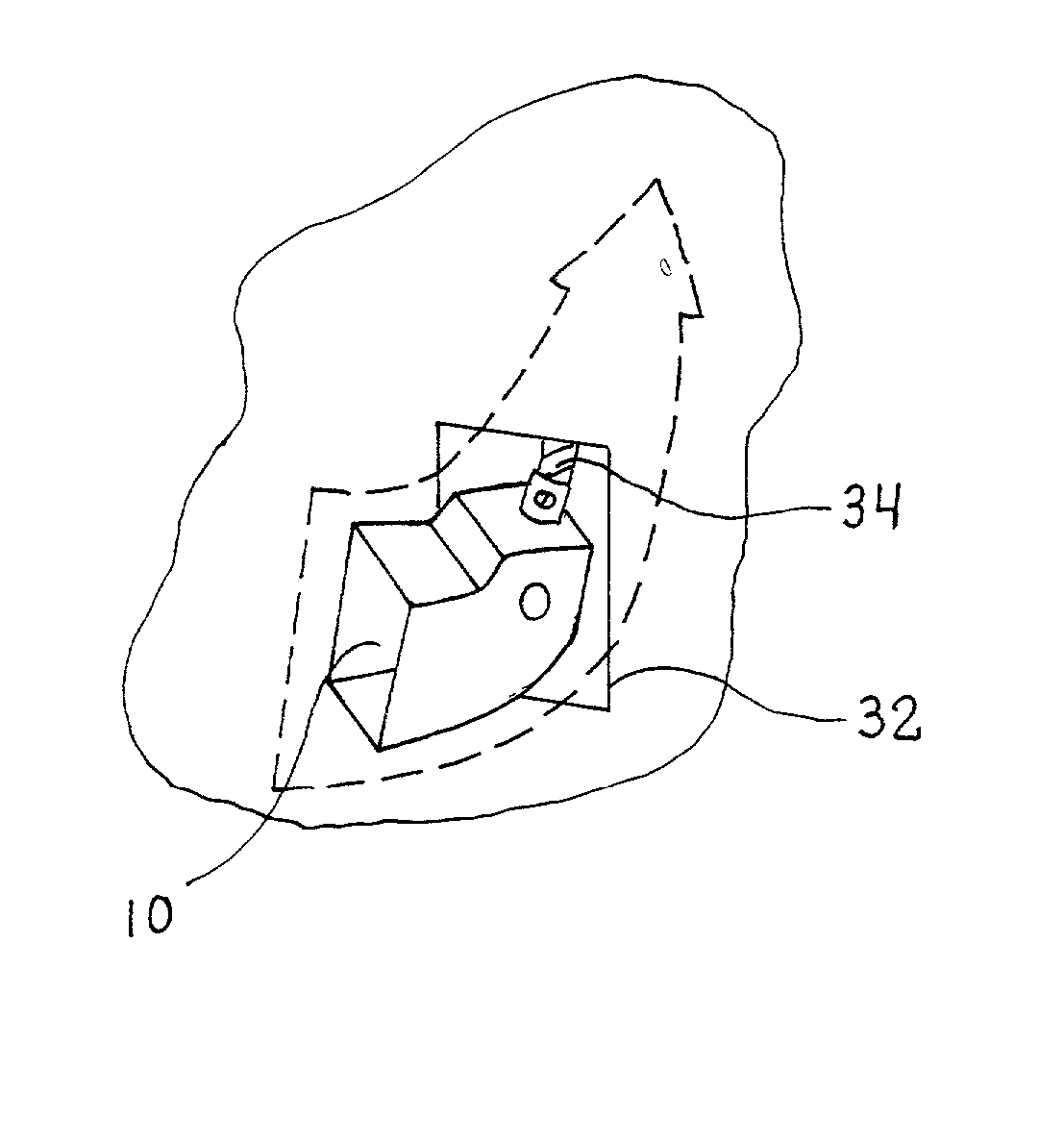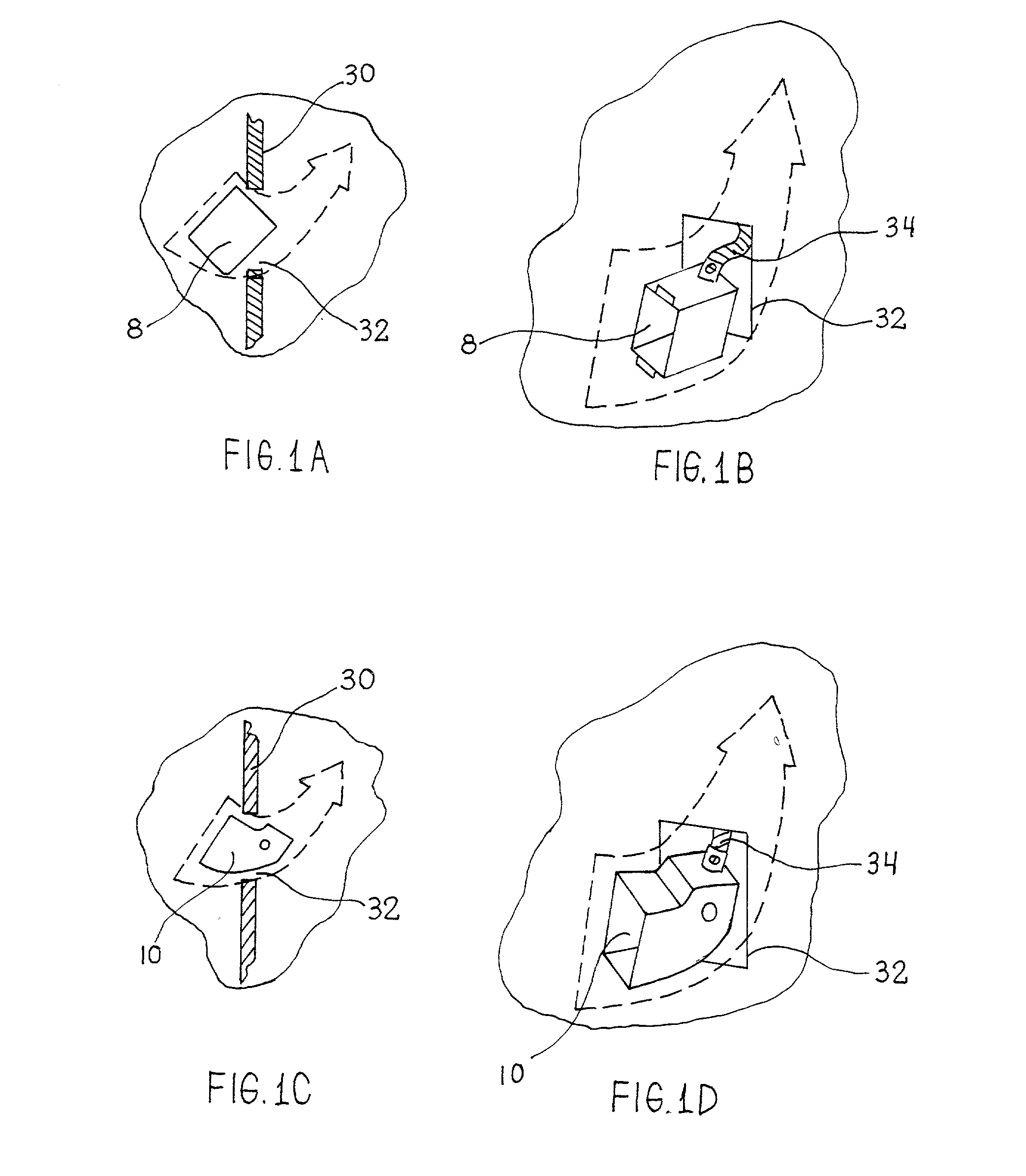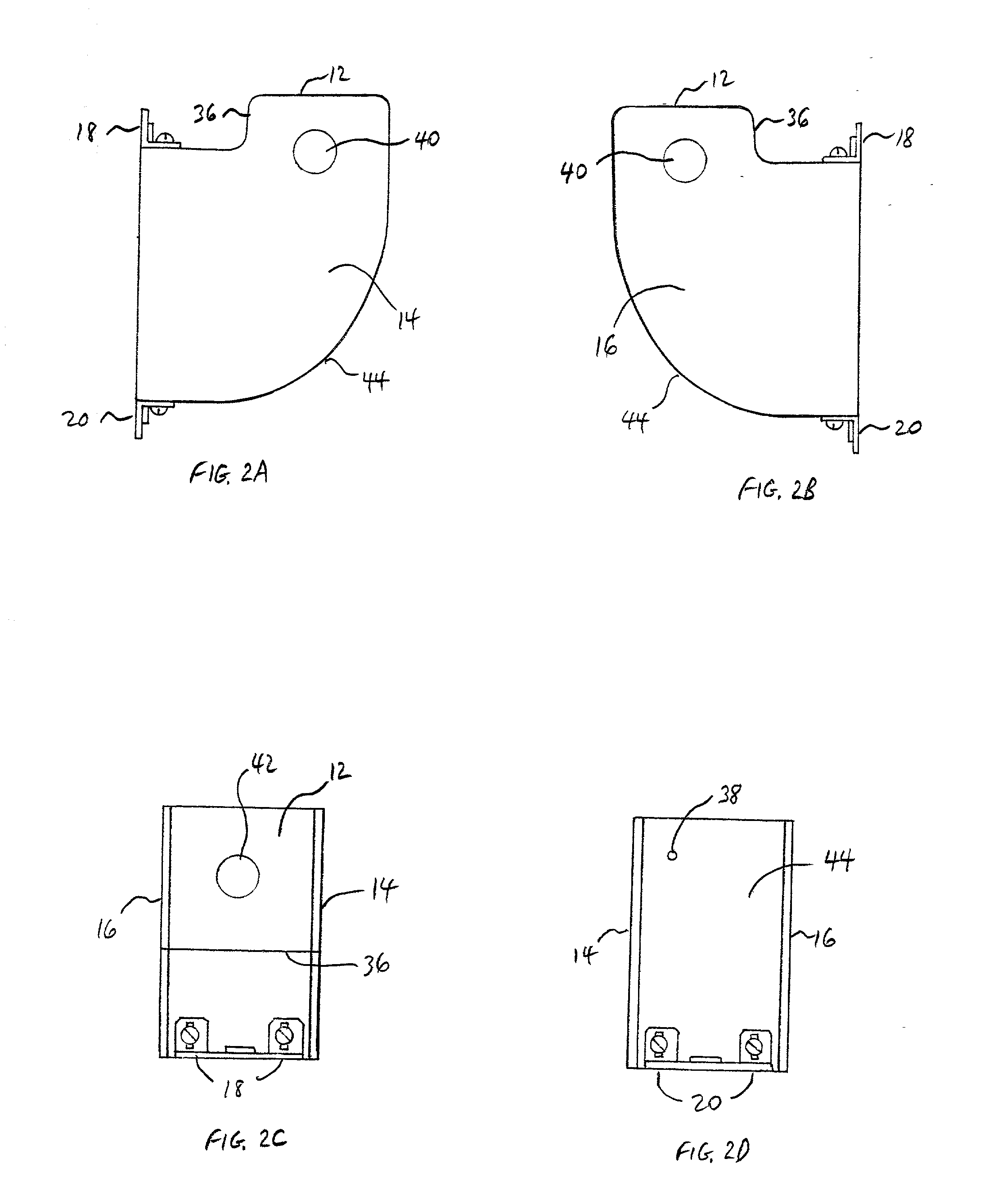The conventional cut-in boxes and installation parts create some very significant practical problems.
One problem is that the installation of a conventional cut-in box commonly requires the installer to bring out the cable(s) from behind the wall opening and
route the cable(s) through a hole in one sidewall of the cut-in box
enclosure, then push the cut-in box through the wall opening.
However, since the cable(s) are now routed through the hole in the enclosure of the cut-in box, the rectangular shaped cut-in box cannot simply be pushed straight through the wall opening.
Another problem is that the installer frequently has to weaken the wall by making a notch cut in the perimeter of the wall opening when the cable(s) (e.g.,
metal cables, armored cables, non-metallic cables, and other equivalents) are pulled out through the wall opening for the initial cable routing and connection.
The installer then installs and attaches labor-intensive mounting brackets to hold the cut-in box firmly against the perimeter of the wall around the wall opening.
An even worse problem than a notch cut in the wallboard around the wall opening is that some cable(s) cannot even normally be pulled out from behind the wallboard for connection to a conventional cut-in box, particularly if the cable(s) are enclosed in a large
diameter metal conduit or flexible metal conduit when it is required by building codes, or if the wall is thicker than normal (e.g., it is a firewall or a wall constructed from a thick wallboard).
Then the installer must retrieve the guide wire from the flexible metal conduit, which can be difficult.
Therefore, the installation of a conventional cut-in box involves a large investment in labor time and labor cost, significantly limiting the number of conventional cut-in boxes that can be installed in a workday.
Another problem with the installation of a conventional cut-in box is the use of conventional mounting brackets (e.g., strips of
thin sheet metal stamped in an "F" shape with the two parallel arms of the "F" designed to fold around the edges of the conventional cut-in box while clamping it against the wall).
These conventional mounting brackets are also typically designed to have the very
thin sheet metal edge push into the wall perimeter around the wall opening, frequently pushing too deep into the wallboard during or after installation, producing a wobbling motion in the cut-in box.
During installation, these conventional mounting brackets also frequently fall into the cavity formed by two parallel sheets of wallboard attached to opposite sides of vertical wall studs, and are retrieved with great difficulty, especially when the vertical wall studs block side access to the cavity between the two walls.
Thus, conventional mounting brackets require significant expensive labor time to clamp the conventional cut-in box to the wall.
Another problem is that the installation of a conventional cut-in box is so difficult and time-consuming that the installer will frequently
route multiple electrical cables through one hole in one sidewall of the enclosure of the cut-in box.
Building codes specify that multiple electrical cables are not supposed to be routed through the same hole in the cut-in box, since the electrical insulation of electrical cables ultimately get compressed and cut by the sharp edge of the sheet metal around the hole in the cut-in box, possibly creating a fire from an electrical short.
Nonetheless, the installation of conventional cut-in boxes leads frustrated installers into making dangerous multiple cable routings, thus creating a safety problem.
Still another problem is that the installation of a conventional cut-in box commonly results in a considerable danger of an electrical short between an exposed
wire segment of electrical cable(s) and the metal enclosure of the conventional cut-in box.
This is an especially serious safety problem if the cut-in box is installed with a sheet metal mounting bracket that has arms that are bent over an exposed edge of the cut-in box.
Furthermore, since the connection of the cable(s) through the enclosure of the cut-in box normally precedes the actual installation and attachment of the cut-in box to the opposite side of the wall with conventional mounting brackets, a wobble in the cut-in box after installation in the wall opening with conventional mounting brackets can ultimately create a pulling force on the electrical cable(s) that can pull out an exposed
wire segment.
This wobbling motion and associated pulling force increase the probability of an eventual electrical short between the electrical cable(s) and the metal enclosure of the cut-in box, since an exposed
wire segment of the electrical cable(s) is normally required for the connection(s) inside the cut-in box.
 Login to View More
Login to View More  Login to View More
Login to View More 


